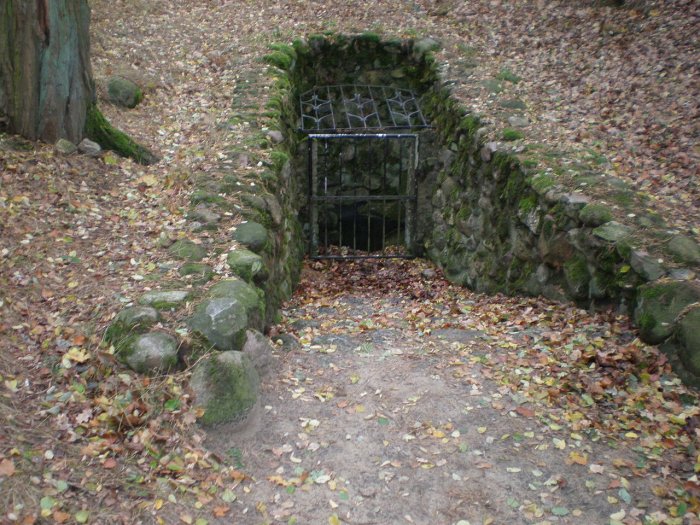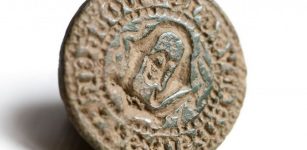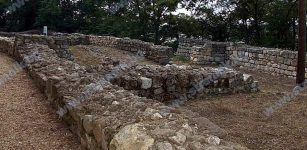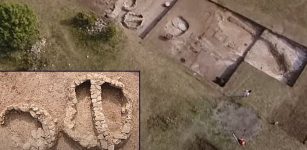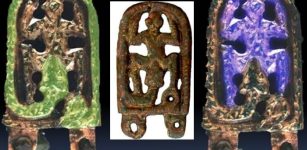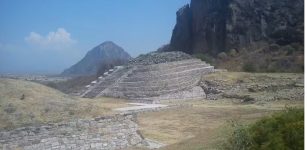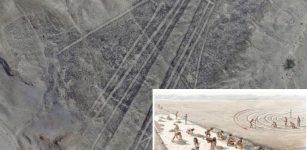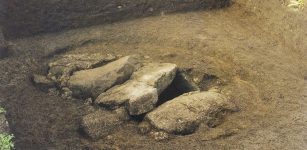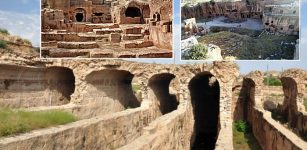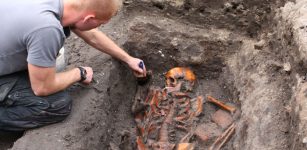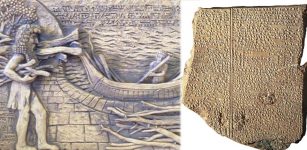Spectacular Giant Bronze Age Hall Found Near Berlin, Germany May Be Connected To Legendary King Hinz
Conny Waters - AncientPages.com - Archaeologists in Germany report discovering the largest building of its kind from the Nordic Bronze Age (circa 2200-800 BC). The spectacular find was made near the royal grave of Seddin in the Prignitz district northwest of Berlin.
Aerial view of the massive 3,000-year-old structure. Credit: Universität Göttingen / Sem. UFG
Brandenburg State Office for Monument Preservation announced the unearthed structure is a massive hall with a floor plan stretching 102 by 33 feet (31 by 10 meters). The 3,000-year-old building was used by royalty and may have served as the meeting hall for legendary King Hinz, the supposed ruler of Prignitz, who was allegedly buried in a golden coffin.
Archaeologist Franz Schopper says this a "spectacular find." According to a report in Spiegel , the hall was discovered during excavations by archaeologist Immo Heske from the Georg-August University of Göttingen and his team in March. It was completely uncovered in the fall.
“We were overwhelmed by how big this building must have been,” said Heske. From 1800 to 800 B.C, there were only two other buildings of this type between Denmark and southern Germany.
Legend Of King Hinz And The Golden Coffin
One legend tells that in ancient times, there was a king in Prignitz named Hinz. He was good and fair to everyone and was extremely popular among his people, like no other ruler before.
When the King died, his people decided to keep his memory alive forever. A magnificent royal tomb was built for him, and two coffins were constructed for his wife and a royal servant. Of all the three coffins, the most valuable was the golden one that belonged to the beloved King. To ensure the King could rest in peace, a mighty hill was around his grave. This is how Hinzberg was created.
Entry to the megalith tomb, the so-called King's Grave at the Seddin burial mound. Credit: Ulf Heinsohn - CC BY-SA 4.0
Through the millennia, the story of King Hinz has been passed down from generation to generation, and his resting place was left in peace. However, it would seem the King's burial has been found.
One of the largest burial mounds in Europe rises near Seddin, approximately halfway between Pritzwalk and Perleberg. Originally around eleven meters in diameter and surrounded at its base by a ring of heavy stones, it has been an impressive sight for ages.
According to tradition, in the last century, the mighty king Hinz was buried on this hill. In 1899, archaeologists uncovered the burial chamber. They recovered Bronze Age vessels containing the remains of three people, including a man in a bronze vessel of unique shape - the "golden" coffin, well protected by the two outer enclosures, the stone chamber, and the earth embankment.
The structure may be the meeting hall of legendary King Hinz. Credit: landkreis-prignitz.de
The unearthed ancient hall may provide more crucial information that will shed light on the mysterious King Hinz.
See also: More Archaeology News
Based on preliminary excavations, scientists can confirm the building walls consisted of wooden planks and wattle and daub with clay plaster. The roof was covered with thatch or straw. Due to the estimated building height of seven meters, it is assumed there were additional floors for living and storage. There was a fireplace centrally located inside the western half of the building. A miniature vessel was recovered on the northern long wall, interpreted as a ritual sacrifice.
State archaeologist Franz Schopper informed the results of this archaeological study will be presented to the public. Within two or three years, a model of the enormous 3,000-year-old hall will be built on the site.
Written by Conny Waters - AncientPages.com Staff Writer


